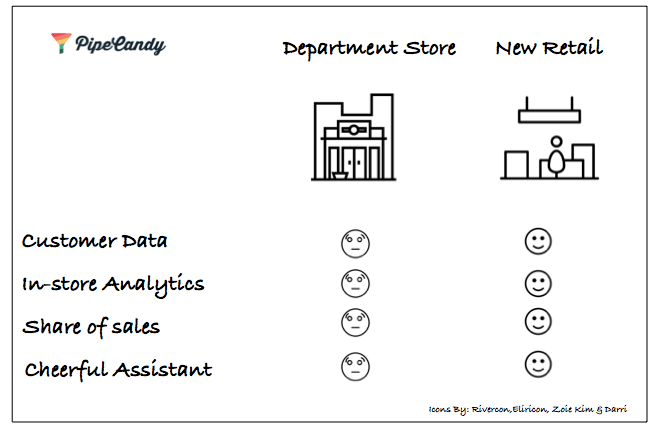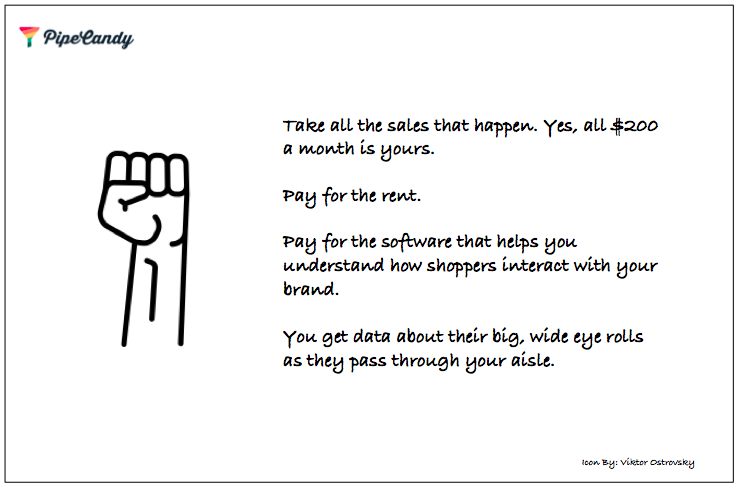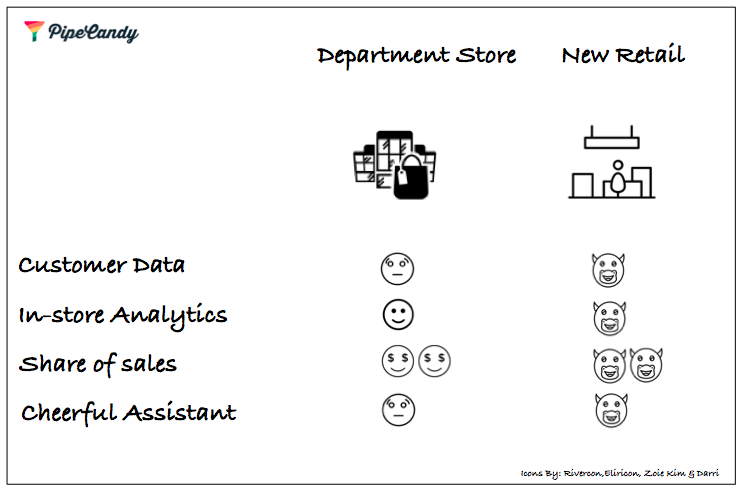Ashwin Ramasamy
More posts from Ashwin Ramasamy
In my day job as founder of PipeCandy, where we discover and track online retailers and D2C brands, I speak to founders and the support ecosystems they depend on for growth. The large fashion retailers and leading commercial retail real estate companies vying for the attention of D2C brands take our help in discovering them.
There is so much going on in the “taking D2C brands offline” space that there are companies dedicated to doing just that. But the dynamic is a bit like my kid trying to postpone preparing for exams until the moment of reckoning comes and she realizes that no amount of reading Harry Potter is going to alter reality.
The reason for the existence of Retail as a Service (RaaS) revolves around the premise that wholesale channels are not conducive for D2C brands. The reality, though, is that D2C brands will eventually embrace wholesale. I am unsure where that would leave RaaS.
We explore some inconvenient questions. Retail as a Service is great for brands to test ideas. But are they going to make venture-scale money? Most of these companies run on VC dollars.
Very few businesses can lose tons of money and still live to own a big market and eventually get the economics right. Uber is likely to be one. I have trouble describing RaaS players as sound businesses that can avoid the Grim Reaper that is economics.
Here’s my bear case, but before we start, let’s just call this sector “New Retail.” RaaS sounds horrible.
Here’s New Retail’s view of the world:

Brands apparently don’t like wholesale channels because they cannot control the experience or acquire data about their consumers — the central thesis of New Retail. Oh, and there is a notion that shoppers enjoy small talk with a cheerful retail assistant; they need someone to apply mineral-rich cream on their hands. The sales would eventually happen online or through a scan-and-go app, but life works differently outside SoHo and Palo Alto. Middle America — and everyone except people in SoHo and Palo Alto — needs retail and goes to shops to buy the things they need. Heck, even in SoHo, scan-and-go doesn’t work well yet.
Companies like ThirdLove, where the product (bras made for women of all shapes and sizes) is complex and there is an inherent dissatisfaction, may find it valuable to set up showrooms for trials; scan-and-go would work there and Middle America is underserved for such experiences. But not all product categories need this kind of experience. Even for ThirdLove, retail is not meant to be a profit center. There comes my bear case.
The sobering reality is that e-commerce in the U.S. is only 7.5% of retail if you ignore Amazon. What? Ignore Amazon? Well, D2C companies are in that phase. I don’t support abusive relationships, but that elephant in the room got there before the brands came into being. You can’t go to its living room and complain that there isn’t space.
Direct-to-consumer brands have two-and-a-half options to address real-world retail: operating their own stores/showrooms, going to wholesale channels or staging warm and fuzzy pop-ups. Enter New Retail companies, the champions of the pop-up retail era. B8ta, Showfields, Neighborhood Goods and others tout a new kind of retail experience to brands.
Here’s their manifesto:

It makes sense-ish for brands; it’s easier to launch a product today than ever. Consumers used the big-brand names as a proxy for trust, but now brands can build trust with YouTube videos. Trust-building is democratized. You could even build a brand based on trust if you are open to slow cooking. Or you could toss it in the oven and what comes out is brandless :P!
As single-ish product brands (once upon a time called “Digital Natives”) launch, they need consumer feedback, and the more real-time the feedback is, the better it is. If you can track the consumer feedback through sensors and other cues right at the moment of truth, it would be awesome. Previously you’d set up a shop at a mall and feedback was a side-benefit. But not all could afford their own shops. Now you go to B8ta or Neighborhood Goods to get feedback.
There is something uncomfortable about this value proposition. To me, it really looks like a lot of organic, toxin-free lipstick on a cheerful pig. It looks cute, but the slaughterhouse is waiting.

While New Retail claims to give customer data, the scale is nearly not as compelling as traditional retail. Product feedback is good, but there is a selection bias. The SoHo crowd cannot make a brand succeed, but they may give one its start. Middle America is where D2C brands have to go to grow (that is, if they want to be big). New Retail does not want to be in Middle America. Brands (at least the ones that are serious about Middle America) could set up their own 500-square-foot “showrooms” once they templatize the “in-store” experience with the help of New Retail service providers.
So for brands, New Retail is a real-life A/B testing, session recording and heat-mapping platform for testing one segment that lives in urban centers or a transitionary platform before setting up their own offline presence. The tech company tag for New Retail also isn’t very appropriate. In the A/B testing software space, the software could potentially plug into every e-commerce website and stay there forever (well, almost). But in the case of New Retail, there is a limit to how many brands they can sign, owing to space constraints. Churn is a part of the design. There isn’t a bigger physical space to upgrade the brands to. Brands that perform well would like to double-down, but New Retail does not support permanent presence for most parts (except those that are attached to big property companies).
One of the top mall owners privately told me that the cute newsstand model (New Retail) is the antithesis to how they make money. They need big brands with big shops or D2C brands that need big fulfillment spaces. The math doesn’t work for them otherwise. It’s not a stretch to assume that New Retail has even lesser ability to monetize space.
That brings us to analytics, the next revenue stream.
The software on top of the tracking infrastructure, often enabled by a real tech company, is just a visualization layer. I would argue that there are a lot of small data problems under the hood that need to be solved before real analytics can happen. Is New Retail a modern-day alternative to the likes of Nielsen? I don’t think that is the case. Their scale/medium and their reluctance to be a traditional sales channel makes them an unreliable source of consumer data. As in-store tech becomes more and more ubiquitous, large department stores can give the same anonymized data about shopper behavior to brands like the New Retail players do today, and maybe even some consumer data. If not anything else, wholesale gives a whole lot of sales.
Besides, for D2C brands, their main channel tends to be e-commerce. Data from New Retail pop-ups have to flow into their main analytics stack for them to analyze and map the shopper journey. New Retail is a data source and not the analytics stack itself.
“Pretty UI + a sublet space + maybe some benchmarking” might make sense for brands in their early days, but what’s the economic incentive for New Retail?
I like the thesis that there would be more brands striking out as independents and there is no compelling need for retail to be the only point of sale or point of discovery destination in the offline world. Tardy as it may be, scan-and-go will succeed in the future. 5G will enable better analytics and personalization without the need for a human assistant to be there to deliver the “wow” moment. But, how far is that future and will the v1.0 of New Retail survive and morph?
I am rooting for the experience it brings and the visibility it enables. But it’s not nearly as exclusive and as compelling given the current scale. What’s your bull case?































Comment